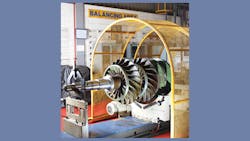The Do’s and Don’ts of Fixed and Moveable Machine Guards Part 2
Machine guard designers are drawn to fixed guards because of their relatively simple design, installation principles and low cost. But fixed guards have their limitations. First and foremost among these limitations is the fact that not all hazards can be completely isolated from workers. Or, access into the hazard zone may be frequent enough that a moveable guard is warranted.
Again, a well-conducted risk assessment will help make the decision about whether utilization of a moveable guard is the proper choice. Generally speaking, if access to the hazard zone is required on a moderate or occasional frequency (e.g., daily or less-than-daily), moveable guards should be considered. An assortment of more sophisticated safety devices (e.g., presence sensing devices, two-hand control devices) not discussed in this series generally is preferred when more frequent access to the hazard zone is required (e.g., loading and unloading parts or stock).
Machine adjustments or set-ups, clearing of jams and machine/tooling lubrication are examples of work that can require moderately frequent or occasional access to hazard zones. Sometimes, loading and unloading parts or stock also falls into this category. The same standards and regulations apply that were addressed in the fixed guard discussion.
Movable Guards
Type A and B gates are two types of moveable guards. They are quite similar, but not identical, in design and purpose. Type A moveable guards enclose the hazard zone during the complete machine cycle. Type B moveable guards only enclose the hazard zone during the hazardous portion of the machine cycle. Both types of moveable guards require safety-rated interlock devices to shut off or disengage power and prevent starting a machine when the guard is open and workers may be exposed to a hazard.
Moveable guards must consider the same safe mounting distance, material and fastener selection, guard removal/replacement, change management and visibility/color requirements that were included in the fixed guard discussion.
Machine stopping time and approach speed of personnel also must be considered in calculating the safe mounting distance (Figure 1 provides an explanation of safe mounting distance). Supplementary braking devices to achieve a faster stopping may be required. Hazardous motion must be stopped or unreachable before the worker is granted entry to the hazard zone.
Safety-Rated Devices
All switches and interlocks must be safety-rated. There are a variety of safety-rated devices that are suitable for various applications. Each has its advantages and disadvantages and must be researched as a part of the risk reduction process to assure proper application. Designs range from mechanical to non-mechanical and non-contact. The switches and interlocks must perform reliably in even the most severe environments. Since not all safety switches are labeled, designers and users should confirm the manufacturer’s declaration of conformity meets the applicable safety device standard and look for third-party verification or certification.
The importance of avoiding non-safety-rated devices cannot be overstated. Non-safety-rated components are not required to “fail-to-safe.” Additionally, they are not required to be tamper resistant, or meet the reliability requirements of safety-rated switches.
Non-safety-rated devices are subject to dangerous failure through contact welds, spring failures, etc. Limit switches and inductive proximity sensors that are not safety-rated simply do not provide the level of protection that is demanded and are very easy to bypass.
While there are many machine guarding strategies available to designers, tried-and-true fixed and moveable guards often provide the two simplest, most effective and most economical alternatives available. Fixed and moveable guards can comprehensively protect many hazard areas that do not require frequent access. While these guards are simpler than other guarding devices, there remains a lengthy set of strict standards that must be observed in order to provide desired levels of protection to workers. Best practices and elevated requirements continue to evolve as practitioners seek optimal methods of protecting workers on a global basis.
John Peabody is the vice president of major accounts for Omron STI. He holds a bachelor of science degree, and has been with Omron STI for over 20 years with positions in control engineering, applications, business development and sales management. Peabody has been the guest speaker at several global and national safety conferences.
